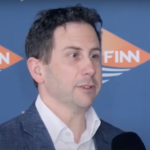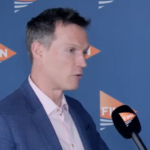The burgeoning sector of electric vertical take-off and landing (eVTOL) aircraft will enable aviation to become not just carbon neutral but climate neutral, JoeBen Bevirt, the founder and CEO of Joby Aviation, said.
The California-based company is developing all-electric aircraft for commercial passenger service to operate as part of a fast, quiet, and convenient air taxi service beginning in 2024.
Reducing urban congestion
The aircraft, which has a maximum range of 150 miles on a single charge, can transport a pilot and four passengers at speeds of up to 200 mph. It is designed to help reduce urban congestion and accelerate the shift to sustainable modes of transit.
Joby recently received a Part 135 Air Carrier Certificate from the Federal Aviation Administration, allowing Joby to begin on-demand commercial air taxi operations.
‘Relevant to people’s daily lives’
Commenting on the eVTOL sector, Bevirt said: “This is a new class of transportation that will make aviation relevant to people’s daily lives. The ability to fly in and around cities and also between cities on a daily basis at an affordable price and with zero emissions.
“One of the really exciting things about electric propulsion is that it allows us to radically rethink the design of aircraft and substantially reduce their operating cost to the point where aviation can be relevant to our daily lives.
“As we look to move daily transportation from the existing modes of transport to flying on a daily basis, we are doing it with aircraft that are 100 per cent battery powered.
“We get to move to a future where all aviation is sustainable, where it is not just carbon neutral but climate neutral, which is really important.”
This means addressing not just carbon emissions but other pollutants and associated environmental factors, including noise.
Noise emissions
Joby recently announced the results of acoustic testing with NASA, which confirmed the aircraft hit the target for low noise emissions during take-off and landing as well as overhead flight.
Bevirt explained: “We have been working for more than a decade to make aircraft that are orders of magnitude quieter. Our current aircraft is 100 times quieter than a comparable helicopter in take off and landing. It is also dramatically quieter in overflight.
“It is not just the absolute moise that is different, it is also the quality of the noise. Rather than having that low frequency [of a helicopter] which penetrates buildings and travels for miles, it is more of the sound of the wind in the trees. We’ve been really, really thoughtful about the acoustics of this aircraft so we can take passengers and deliver them to where they want to go.”

